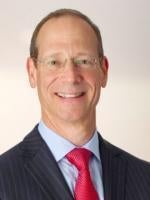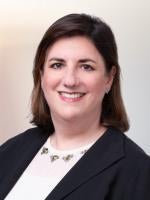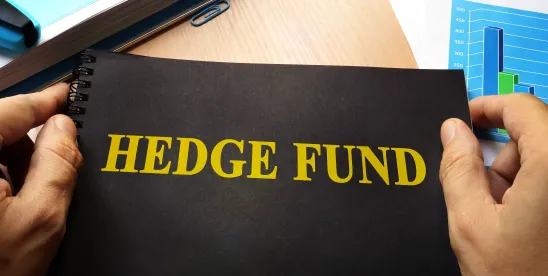In this episode, we’re joined by Caroline Cooley, managing partner and CIO for Crestline Summit Strategies. Caroline joined Crestline in 1998 and has since helped build the firm into a multi-strategy, multi-portfolio and multi-billion-dollar asset manager.
During our conversation, we explore Crestline’s “platform model” and how that model allows the hedge fund to manage risk and engage and retain top talent in the industry. We also discuss Crestline’s strategy for delivering alpha through an equity-oriented, market-neutral investment philosophy. We finish with Caroline’s views on what it takes to be a successful CIO and insights into some of the formative aspects of her career.
Also joining us to lend her insights on the evolving hedge fund industry is Proskauer partner Kelli Moll. Kelli is co-head of the Firm’s Hedge Funds practice and co-lead of the global credit funds initiatives and has more than 25 years of experience advising clients across the spectrum of asset classes.
Peter Antoszyk: Hello and welcome to Private Market Talks. I’m your host, Peter Antoszyk. Today, I’m speaking with Caroline Cooley. Caroline is a veteran in the alternative investment industry. She is a managing partner at Crestline Investors and the Chief Investment officer for Crestline Summit Strategies, Crestline’s hedge fund unit. Crestline Summit is a multi‑strategy, multi‑portfolio asset manager that employs an equity‑oriented market neutral investment strategy. Over the past 25 years, Caroline has helped build Crestline into the multibillion‑dollar asset manager that it is today. Crestline Summit’s emergence as an, a hedge fund asset manager is unique and its growth is in no small part due to Caroline’s background, drive and moral compass. In today’s episode, we discuss how Crestline’s hedge fund to fund business has evolved since the great financial crisis and how Crestline Summit found a better way to deliver alpha to its investors that was pure and liquid. We also explore Crestline Summit’s current investment strategy, trends in beta‑neutral equity investing and how Caroline thinks about risk management. Finally, we cover Caroline’s path to covering one of the largest books in the country as a female CIO. Joining me today is my partner, Kelli Moll. Kelli is a partner in Proskauer’s private investment funds practice and helps lead the hedge fund and credit fund groups. As always, you can get a full transcript of this episode and other helpful information at privatemarkettalks.com, and don’t forget to subscribe. And now, my conversation with Caroline and Kelli. Caroline, Kelli, welcome to Private Market Talks.
Caroline Cooley: Thank you, Peter.
Kelli Moll: Thank you.
Peter Antoszyk: Caroline, my first question is, can you still walk on your hands?
Caroline Cooley: Oh. That’s good. So apparently, that’s now legendary. I was actively trading when the stock market crashed in 1987 and rumor has it I walked on my hands to celebrate, but really, I walked on my hands to relieve stress across the trading room, got done, went back to my desk and continued trading. But that story lives on.
Peter Antoszyk: There you go. And so, what do you, what do you do to relieve stress today if you’re not walking on your hands?
Caroline Cooley: Actually now, I run. I’m a person who runs. I’m not a runner, but it works for me.
Peter Antoszyk: Crestline started, I believe, as a fund‑to‑fund structure but has since evolved. Before we talk about the evolution of Crestline Investors and the emergence of Crestline somewhat more specifically, I think it would be helpful to provide our listeners with some context. So, could you describe how the structure of the hedge fund industry has changed since the GFC?
Caroline Cooley: Let’s just kind of think about hedge funds broadly, what they do, different ways to structure them. So, the traditional hedge fund, original hedge funds, were really long short equity strategies, long stocks, short stocks, maybe had some market beta, one manager with the team under him or her, and very simple in concept and actually, fairly simple in structure. Step two, hedge funds developed multi-strategy approaches. So, “Hey. I’ve got this really great portfolio manager at the helm. I want to diversify my return stream. But I still have one decision maker, I have one performance fee, but I have more things kind of going on beneath the hood.” Okay? Next iteration really was the fund‑of‑funds concept. So, it was, “Okay. Well, I want more than one decision maker. I want to diversify the portfolio. Investors wanted broad exposure to the hedge fund industry.” So, fund‑of‑funds kind of evolved, right, and they gave you a diversified return stream, multiple decision makers, lots of different sources of alpha and stock picking bonds, whatever. But the problem with the fund‑of‑funds was that it’s harder to move capital around. The balance sheet usage was inefficient. So, there’s some inefficiency built into that model and the next iteration. I think kind of the current area of growth in the hedge fund industry is now the hedge fund platform model, which kind of takes some of the best aspects of the multi-strategy portfolio and some of the better aspects of a fund‑of‑funds, but it’s really solving some problems. Number one, balance sheet usage is better. So, in a multi‑PM or a platform model, there’s multiple decision makers but one balance sheet. So, the capital usage is much more efficient. Now, you still get a centralized decision‑making process. You have multiple portfolio managers picking your stocks or delivering your alpha so to speak, but it’s a different compensation structure. So, unlike a multi‑strategy fund, the multi‑PM model pays each portfolio manager based on their own performance rather than the performance of the whole portfolio, and then people have to fight over it. I think although it makes the model technically more expensive, it creates an alignment of interests such that the best talent chooses to work at a multi‑platform, because they can get paid if they do well. That’s really one of the reasons I think that the, the performance in that structure has been better overall within the hedge fund universe.




 />i
/>i

